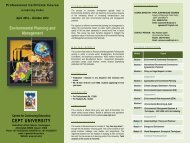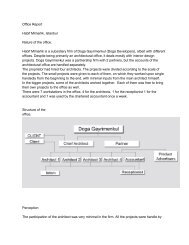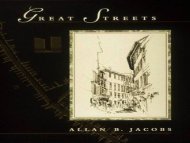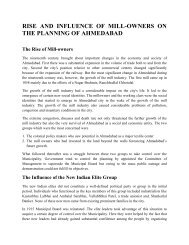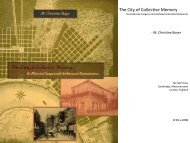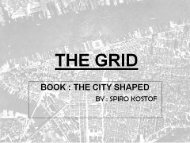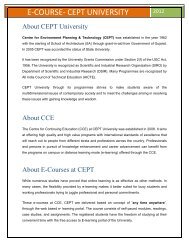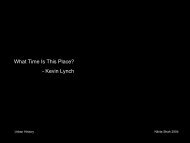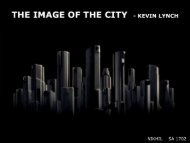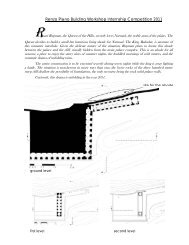BOOK REVIEW adhar talati 3302.pdf
BOOK REVIEW adhar talati 3302.pdf
BOOK REVIEW adhar talati 3302.pdf
You also want an ePaper? Increase the reach of your titles
YUMPU automatically turns print PDFs into web optimized ePapers that Google loves.
The ironic thing about the idea for the "Duck and the Decorated<br />
Shed," is the fact that the group of Robert Venturi, Denise Scott Brown,<br />
and Steven Izenour admit to an ulterior motive of its invention. They start<br />
by telling us a simple known fact that architects as a rule, tend to<br />
philosophize and write in order to justify their own work. And that they<br />
are no different than the masses of architects, big names and small<br />
names that have come before them.<br />
They define the idea and an exercise in image over process or<br />
form. The part they tell us that is the final 10% of a project but the part<br />
we all see and remember. They talk about the idea of the image being<br />
either similar to or relating to the form or a contradiction to the form,<br />
structure, and program of the building of which they are part. The<br />
exercise will be divided into these manifestations:<br />
1. Where the architectural systems of space, structure, and program are<br />
submerged and distorted by an overall symbolic form. This kind of<br />
building becoming sculpture we call the duck in honor of the duck<br />
shaped drive-in, "The Long Island Duckling," illustrated in God's Own<br />
Junkyard by Peter Blake.<br />
2. Where systems of space and structure are directly at the service of<br />
program, and ornament is applied independently of them. This we call<br />
the decorated shed.



